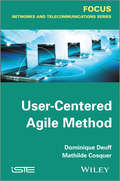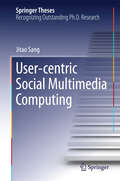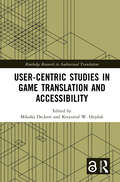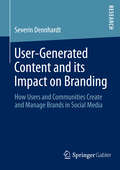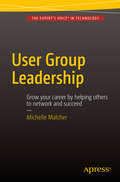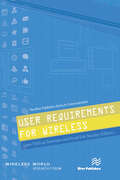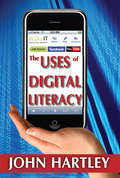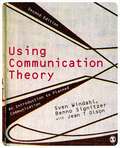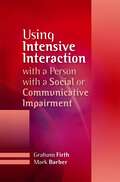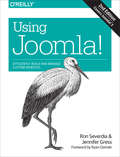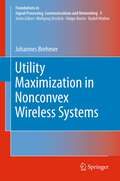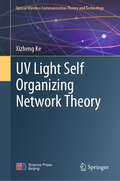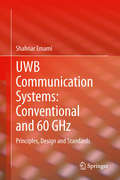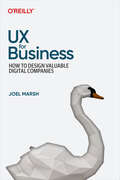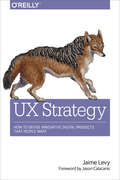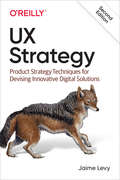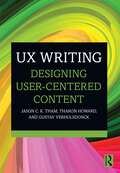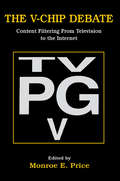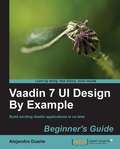- Table View
- List View
User-Centered Agile Method
by Dominique Deuff Mathilde CosquerAgile development methods began to emerge around 20 years ago. However, it was not until the early 2000s that they began to be widely used in industry. This growth was often due to the advent of Internet services requiring faster cycles of development in order to heighten the rate at which an ever-greater number of functionalities were made available. In parallel, user-centered design (UCD) methods were also becoming more and more widely used: hence, user-centered design and agile methods were bound to cross paths, at least in the telecoms industry! During this period, in the field of telecommunications, the explosion in the number of connected terminals, Web applications, new use environments (particularly in a domestic setting), etc., meant it was crucial to gain a fuller understanding of users’ requirements and better evaluate the relevance and acceptance of services’ attempts to cater for these requirements. Thus the user-centered agile method, as proposed in this book, aims to mutually integrate two existing methods: user-centered design – as used by ergonomists – and the agile Scrum method – as used by developers. The user testing method is also covered. Analyzing work on this subject spanning the past 10 years, the authors also provide an assessment of the feedback on the user-centered agile method. The method described in this book has been based on all these sources. It is a framework relying on the logic introduced by Scrum, i.e. a framework based on project management. The method proposed is seen as an extension of Scrum which is “centered on humans” because of the integration of user-centered design and user-testing. Therefore the description of the user-centered agile method is based on the basics of the agile Scrum method and uses its terminology and elements. As well as descriptive elements of the user-centered agile method, practical examples of how to implement it are also provided. Contents 1. Introduction. 2. Intrioduction to the Methods Employed. 3. Sources for this Work. 4. Description of The User-Centered Agile Method. 5. Case Studies. About the Authors Dominique Deuff worked at the National Institute of Informatics in Japan for 2½ years before coming back to France in June 2006 and joining Orange Labs France Telecom as a developer in a Scrum team. In 2008, she graduated with a Master’s degree in ergonomics and has since then been applying her new skills to various projects at Orange Labs Lannion. Mathilde Cosquer joined Orange Labs as an ergonomist after completing her PhD on the question of transparency of technical devices from the user’s point of view. She has taken part in the design and evaluation of numerous innovating services, but over the past four years, she has been more particularly involved in projects of interpersonal communication services.
User-centric Social Multimedia Computing
by Jitao SangThis book presents the first paradigm of social multimedia computing completely from the user perspective. Different from traditional multimedia and web multimedia computing which are content-centric, social multimedia computing rises under the participatory Web2. 0 and is essentially user-centric. The goal of this book is to emphasize the user factor in facilitating effective solutions towards both multimedia content analysis, user modeling and customized user services. Advanced topics like cross-network social multimedia computing are also introduced as extensions and potential directions along this research line.
User-Centric Studies in Game Translation and Accessibility (Routledge Research in Audiovisual Translation)
by Mikołaj Deckert Krzysztof W. HejdukThis innovative collection makes the case for a push within the discipline to adopt user-centric perspectives on translated video games and their corresponding accessibility features.The volume demonstrates how audiovisual translation (AVT) and media accessibility (MA) involve decisions that can re-shape the gaming experience of players and other audiences. Contributions in the book outline this in two ways. First, they collectively provide an account of the prospects and challenges that come with user-centric scholarly inquiry in game translation and accessibility. Second, complementarily, they report on original studies and new, exciting findings while adopting the perspective of global users. Taken together, the collection serves as a call to action to systematically advance research eliciting variable types of input from users who take advantage of translation and accessibility services. Such research will facilitate a clearer understanding of how the particular decisions of translators and other relevant agents shape game reception.This book will be of interest to scholars in both translation studies and video game research, as well as those interested in media accessibility and media studies more broadly.Chapters 7 of this book is freely available as a downloadable Open Access PDF at http://www.taylorfrancis.com under a Creative Commons Attribution-NonCommercial-NoDerivs (CC BY-NC-ND) license.
User Community Discovery
by Yiannis Kompatsiaris Dimitrios Vogiatzis Symeon Papadopoulos Georgios PaliourasThis book redefines community discovery in the new world of Online Social Networks and Web 2. 0 applications, through real-world problems and applications in the context of the Web, pointing out the current and future challenges of the field. Particular emphasis is placed on the issues of community representation, efficiency and scalability, detection of communities in hypergraphs, such as multi-mode and multi-relational networks, characterization of social media communities and online privacy aspects of online communities. User Community Discovery is for computer scientists, data scientists, social scientists and complex systems researchers, as well as students within these disciplines, while the connections to real-world problem settings and applications makes the book appealing for engineers and practitioners in the industry, in particular those interested in the highly attractive fields of data science and big data analytics.
User-Generated Content and its Impact on Branding
by Severin DennhardtThe emergence of social media as one of the driving forces of consumers' online experiences today also challenges our current understanding on marketing and brand management. The effects of brands' social media involvement are to this day uncertain. Severin Dennhardt shows that social media and user-generated brands do have a strong influence on brands. Four independent studies demonstrate that first, successful brands can be created in virtual worlds, second, user-generated content drives the creation of unique brands, third social media strongly influences the social value perception of brands, and fourth, social media impacts consumers' purchase decision process.
User Group Leadership
by Michelle MalcherThis book is about starting and sustaining a technology user group. User groups are a wonderful way to connect with local and like-minded professionals for networking and learning. All the forums and social media on the internet can't replace face-to-face time spent discussing problems, upcoming technologies, and other pertinent topics. What every user group needs is leaders to organize meetings, find speakers, and connect the community. What every leader needs is good advice and guidance on how to begin a group and nurture new leadership to keep the group sustainable, and Michelle Malcher provides just that right sort of guidance in her book on User Group Leadership. This book is designed to help you understand what goes into starting and building a user group, giving you the tools and resources to do so. Learn what to expect before your first meeting, in the first three months, and in the first year. Malcher has experience from the local group level on up to the international level with the Independent Oracle User Group. If you're involved in technology and are ready to take on a position of leadership by which to help others network, succeed, and grow, then grab a copy of this book. You won't find a better source of guidance for starting and growing a new group on the technology of your choice. Learn what to know before you ever have your first meeting Prepare for each meeting with a list of things that should be done Grow your local members into future leaders What you'll learn Choose the right motivations for starting a group Build a governance structure and integrate with an umbrella group Locate and book interesting speakers Recruit help to share the administrative burden Grow the next generation of leadership Make a difference in people's careers by helping them grow and network and learn Who this book is for User Group Leadership is aimed at technology professionals interested in networking and learning with like-minded people in their same technology area. The book is especially aimed at the ambitious professional who is ready to step into a leadership role by creating a vibrant user community where no such community currently exists, but one is needed. Table of Contents 1. Development of a User Group 2. User Group Governance 3. Building Leaders and Volunteers 4. User Group Planning 5. User Group Members 6. Challenges 7. Career Development 8. From Techie to Leader 9. Qualities of a User Group Leader 10. Qualities of a User Group Volunteer
User Requirements for Wireless (River Publishers Series In Communications Ser.)
by Lene Tolstrup Sørensen Knud Erik SkoubyIn most IT system development processes, the identification or elicitation of user requirements is recognized as a key building block. In practice, the identification of user needs and wants is a challenge and inadequate or faulty identifications in this step of an IT system development can cause huge problems with the final product. The elicitation of user requirements as such changes according to age groups;, to gender,; to cultural settings,; and into time; and experience in the use of the system/software. User requirements, therefore, cannot be used between projects, IT systems, and different software. That makes the elicitation of user requirements an inherent part of any software development project and a resourceful activity as well. This book provides insights to the process of identifying user requirements and to different types by describing varying case studies in which technologies or software has been developed. A variety of user requirements are provided illustrating the effect of changing the targeted user group with respect to age,; to the context and the different technologies or software as well as to the difference in viewpoint on ways of involving users in the elicitation process. Cases and user requirement elements discussed in the book include: • User requirements elicitation processes for children, construction workers, and farmers• User requirements for personalized services of a broadcast company• Variations in user involvement• Practical elements of user involvement and requirements elicitation• Usable security requirements for design of privacy.
The Uses of Digital Literacy (Creative Economy + Innovation Culture Ser.)
by John HartleyAt the heart of this book lies a reappraisal of humanities research and its use in understanding the conditions of a consumer-led society. This is an open, investigative, critical, scientific task as well as an opportunity to engage with creative enterprise and culture. Now that every user is a publisher, consumption needs to be rethought as action not behavior, and media consumption as a mode of literacy.Online social networks and participatory media are often still ignored by professionals, denounced in the press and banned in schools. But the potential of digital literacy should not be underestimated. Fifty years after Richard Hoggart's pioneering The Uses of Literacy reshaped the educational response to popular culture, John Hartley extends Hoggart's argument into digital media. Media evolution has made possible the realism of the modern age journalism, the novel and science not to mention mass entertainment on a global scale.Hartley reassesses the historical and global context, commercial and cultural dynamics and the potential of popular productivity through analysis of the use of digital media in various domains, including creative industries, digital storytelling, YouTube, journalism, and mediated fashion. Encouraging mass participation in the evolutionary growth of knowledge, The Uses of Digital Literacy shows how today's teenage fad may become tomorrow's scientific method. Hartley claims the time has come for education to catch up with entertainment and for the professionals to learn from popular culture. This book will stimulate the imagination and stir further research.
Using Communication Theory: An Introduction to Planned Communication
by Sven Windahl Benno H. Signitzer Jean T. Olsen‘Using Communication Theory was a rarity in bridging the gap between ideas and practice. It was itself a model of good communication and in its second, revised edition, it is still a most reliable and accessible guide to the lessons that communication theory and research offer to practitioners, especially in planning for change' - Denis McQuail, Professor Emeritus, University of Amsterdam ‘Using Communication Theory has become a classic in the education of communication. It is the comprehensive and self-evident source for theories and models, forming the base for the study of professions requiring communication planning' - Larsåke Larsson, Örebro University What does theory have to do with the practice of communication? Communication planning is used daily by thousands of people: public relations practitioners, technical writers, information campaigners, advertising professionals, organization consultants, educators, health communicators and more. Without a solid understanding of communication theory, practitioners have difficulty getting their messages heard. The second edition of this best-selling textbook has been updated with the student firmly in mind. With new learning features that directly engage with the practical side of theory, students will: · Practice what they learn with activities and exercises · Apply their own experiences to theory through prompts to reflection · Consolidate their learning with highlighted definitions and lists of key terms · Take it further with boxed excerpts from classic texts Showing how theories relate directly to the planning and experience of effective communication, Using Communication Theory - 2nd Edition provides indispensable insights into the practical nature of communication theory. In today’s landscape of communication overload, this book remains an essential, authoritative guide for both students and practitioners. Sven Windahl is based at the Nordisk Kommunikation. Benno Signitzer is Professor of Communication Studies at the University of Salzburg. Jean T Olson works in the public sector.
Using Information Technology (Tenth Edition)
by Stacey Sawyer Brian WilliamsUSING INFORMATION TECHNOLOGY; A Practical Introduction to Computers & Communications 10/e "If there is anything we have learned during 18 years of writing and revising this computer concepts book, it is this: Not only does the landscape of computer education change rapidly, but so do the students. . . . This edition, then, is written for the Always On generation, helping students use technology to enrich their personal lives. " -Brian K. Williams & Stacey C. Sawyer
Using Intensive Interaction with a Person with a Social or Communicative Impairment
by Mark Barber Graham FirthIntensive Interaction is a highly effective approach for communicating and developing social interaction and engagement with difficult-to-reach individuals. This easy-to-use guide steers readers through the practical application of the approach, showing how positive results can best be achieved. The authors explain clearly how to prepare for, carry out and reflect on the use of Intensive Interaction with a client or family member. A multitude of key questions are addressed, including finding the right setting, evaluating progress and disengaging effectively at the end of a session. In the final section they consider some of the wider implications of the approach, such as developing confidence as a practitioner and incorporating Intensive Interaction into long-term care or educational planning. This practical and accessible book is a useful resource for speech and language therapists, occupational therapists, special school or further education teachers, social care professionals and anyone else caring for or working with people with social or communicative impairments. It will also be useful to practitioners already using the approach.
Using Joomla: Building Powerful and Efficient Web Sites
by Ron Severdia Kenneth CrowderWhy use Joomla? Because with Joomla you don't need to have any technical expertise or web design experience to create effective websites and web apps. Whether you're creating your first website or building a multi-function site for a client, this book provides straightforward, hands-on instruction that makes it easy to learn this open source web content management system.Written by members of the Joomla Leadership Team, Using Joomla helps newcomers quickly learn the basics, while developers with Joomla experience will pick up best practices for building more sophisticated websites. You'll also find more than a dozen ways to extend the functionality of existing Joomla-built websites. Start building with Joomla in minutes!Get guidelines for planning, creating, and organizing your contentUnderstand how to create and use Joomla templates to build websites quicklyExplore how components, modules, and plug-ins can extend your site's functionalityIncrease your site ranking by using Joomla best practicesUse built-in components such as banners, news feeds, polls, search, and web linksSet up an online store, calendar, photo gallery, discussion forum, and moreLearn important security precautions to safeguard your site
Using Joomla!: Efficiently Build and Manage Custom Websites
by Ron Severdia Jennifer GressIf you’re new to content management systems—or even new to building websites—this practical guide will get you up and running in no time. You don’t have to know much code, if any, to get started.Need to build a website quickly? Have a client that requires a powerful website with lots of compelling features? Ideal for web designers and developers alike, this updated edition takes you step-by-step through site creation with Joomla, with plenty of hands-on exercises along the way.Build a sample site throughout the book to see how Joomla! worksPlan and structure your site’s categories, articles, menus, and modulesLearn the ins and outs of creating, organizing, and displaying contentAdd images, audio, and video—and create complete image galleriesBuild a blog, set up an events calendar, and create custom user formsSell merchandise by putting together your own online storeEngage visitors by creating user profiles and hangoutsSecure your site and keep it optimizedMigrate to Joomla! 3 and update your third-party extensions
Using Qualitative Research in Advertising: Strategies, Techniques, and Applications (2nd Edition)
by Dr Margaret A. Morrison Dr Eric E. Haley Kim B. Sheehan Dr Ronald E. TaylorThis Second Edition remains the only book to discuss both theory and application of qualitative research techniques to inspire great advertising and build strong brands. Using a step-by-step approach created for students considering advertising careers and for those currently working in the advertising industry, this book explains what qualitative research techniques are designed to do. The text describes how these techniques aid in uncovering insights useful for advertising strategy development, creative development, and post-campaign evaluation. Practical information and discussions on interviewing, projective techniques, focus groups, and online/social media applications positioned within a theoretical context illustrate the value of qualitative research in the real world.
Utility Maximization in Nonconvex Wireless Systems
by Johannes BrehmerThis monograph develops a framework for modeling and solving utility maximization problems in nonconvex wireless systems. The first part develops a model for utility optimization in wireless systems. The model is general enough to encompass a wide array of system configurations and performance objectives. Based on the general model, a set of methods for solving utility maximization problems is developed in the second part of the book. The development is based on a careful examination of the properties that are required for the application of each method. This part focuses on problems whose initial formulation does not allow for a solution by standard methods and discusses alternative approaches. The last part presents two case studies to demonstrate the application of the proposed framework. In both cases, utility maximization in multi-antenna broadcast channels is investigated.
UV Light Self Organizing Network Theory (Optical Wireless Communication Theory and Technology)
by Xizheng KeThis book covers the basic concepts of UV communication, the analysis of UV channel characteristics, the organize media access protocols, and routing protocols, etc. in the network. Based on the analysis of classical communication protocols, a basic framework for UV self-organising networks is proposed. The communication protocol proposed in the book is analyzed in detail, and the key procedures of computer simulation are given at the end of the book so that readers can learn and understand.This book can guide senior undergraduate and postgraduate students of communications, networking, and other related majors in colleges and universities. It can also be used as a reference book for researchers and engineering technicians.
UWB Communication Systems: Conventional and 60 GHz
by Shahriar EmamiIn this book the author examines 60 GHz and conventional UWB. The book introduces the fundamentals, architectures, and applications of unified ultra wideband devices. The material includes both theory and practice and introduces ultra wideband communication systems and their applications in a systematic manner. The material is written to enable readers to design, analyze, and evaluate UWB communication systems.
UX for Business: How to Design Valuable Digital Companies
by Joel MarshMany UX designers are surprised to learn that much of the job isn't about drawing things. It's about knowing what to draw and how to convince people to build it. Whether you're a one-person design team making products from scratch or a C-level product leader managing many products and strategies, UX for Business is your missing guide to real-world business design.You'll not only learn how to think about design as a professional but also discover how design can move the needle for your entire company. Author Joel Marsh helps you understand stakeholders, business models, the process of designing valuable solutions, dangerous choices that can ruin a product, and how to gain the attention your work deserves. You'll also explore the principles of designing common types of digital products and services, from portfolio sites to social networks to ecosystems.With this book, you'll learn:How to design the right things by understanding value, diagnostics, and probabilityHow to conduct UX research and analysis without the luxury of time or moneyThe most important aspects of common digital business modelsMethods for getting things done under less-than-ideal circumstancesHow to avoid common pitfalls caused by inexperience
UX on the Go: A Flexible Guide to User Experience Design
by Andrew MaraDesigned with flexibility and readers’ needs in mind, this purpose driven book offers new UX practitioners succinct and complete intructions on how to conduct user research and rapidly design interfaces and products in the classroom or the office. With 16 challenges to learn from, this comprehensive guide outlines the process of a User Experience project cycle from assembling a team to researching user needs to creating and veryifying a prototype. Practice developing a prototype in as little as a week or build your skills in two-, four-, eight-, or sixteen-week stretches. Gain insight into individual motivations, connections, and interactions; learn the three guiding principles of the design system; and discover how to shape a user’s experience to achieve goals and improve overall immediate experience, satisfaction, and well-being. Written for professionals looking to learn or expand their skills in user experience design and students studying technical communication, information technology, web and product design, business, or engingeering alike, this accessible book provides a foundational knowledge of this diverse and evolving field. A companion website will include examples of contemporary UX projects, material to illustrate key techniques, and other resources for students and instructors. Access the material at uxonthego.com.
UX Strategy: How to Devise Innovative Digital Products that People Want
by Jaime LevyUser experience (UX) strategy requires a careful blend of business strategy and UX design, but until now, there hasn't been an easy-to-apply framework for executing it. This hands-on guide introduces lightweight strategy tools and techniques to help you and your team craft innovative multi-device products that people like to use.Whether you're an entrepreneur, UX/UI designer, product manager, or part of an intrapreneurial team, this book teaches simple-to-advanced strategies that you can use in your work right away. Along with business cases, historical context, and real-world examples throughout, you'll also gain different perspectives on the subject through interviews with top strategists.Define and validate your target users through provisional personas and customer discovery techniquesConduct competitive research and analysis to explore a crowded marketplace or an opportunity to create unique valueFocus your team on the primary utility and business model of your product by running structured experiments using prototypesDevise UX funnels that increase customer engagement by mapping desired user actions to meaningful metrics
UX Strategy: How To Devise Innovative Digital Products That People Want
by Jaime LevyUser experience (UX) strategy lies at the intersection of UX design and business strategy, but until now, there hasn't been an easy-to-apply framework for executing it. This hands-on guide introduces lightweight product strategy tools and techniques to help you and your team devise innovative digital solutions that people want.Author Jaime Levy shows UX/UI designers, product managers, entrepreneurs, and aspiring strategists simple to advanced methods that can be applied right away. You'll gain valuable perspective through business cases and historical context. This second edition includes new real-world examples, updated techniques, and a chapter on conducting qualitative online user research.Define value propositions and validate target users through provisional personas and customer discovery techniquesExplore marketplace opportunities by conducting competitive research and analysisDesign experiments using rapid prototypes that are focused on the business modelConduct online user research to gain valuable insights quickly on any budgetTest business ideas and validate marketing channels by running online advertising and landing page campaigns
UX Writing: Designing User-Centered Content
by Jason C.K. Tham Tharon Howard Gustav VerhulsdonckThis flexible textbook provides an integrated approach to user experience (UX) writing and equips students and practitioners with the essential principles and methods to succeed in writing for UX. The fundamental goal of UX writing is to produce usable and attractive content that boosts user engagement and business growth. This book teaches writers how to create content that helps users perform desired tasks while serving business needs. It is informed by user-centered design, content strategy, artificial intelligence (AI), and digital marketing communication methodologies, along with UX-related practices. By combining writing-as-design and design-as-writing, the book offers a new perspective for technical communication education where UX design and writing are merged to achieve effective and desirable outcomes. Outlining the key principles and theories for writing user-centered content design, this core textbook is fundamental reading for students and early career practitioners in UX, technical communication, digital marketing, and other areas of professional writing.
The V-chip Debate: Content Filtering From Television To the Internet (Routledge Communication Series)
by Monroe E. PriceThe V-chip is a highly significant part of the discussion about whether television (or broadcasting in general) deserves some special attention in terms of its accessibility to children, its particular power to affect conduct, and its invasiveness. But as this notion of filtering and labeling has caught the imagination of the regulator, the legislator, and all those who wish to consider new ways to alter bargaining over imagery in society, the very idea of the V-chip or its equivalent is moving across other technologies, including the Internet. The V-chip issue has also fueled the ongoing debate about violence and sexual practices in society, and how representations on television relate to those practices. Although the initial concept of the V-chip is simple, its flow into the public realm raises so many extraordinary questions that the introduction and production of the chip virtually serves as a case study in problems of law and public policy. The very conceptualization of speech in society is being affected by this issue. Accordingly, the place of the V-chip in this debate is increasingly important; indeed, it may be argued that the V-chip's contribution to legal argumentation may be greater than its ultimate contribution to the relationship between children and imagery. Among the questions the contributors address are: *What research basis is necessary to require a framework for labeling and rating? *What relationship between government and the image-producing industries can be characterized--for constitutional and other reasons--as voluntary as opposed to coercive? *Who should evaluate these images? *To what extent should the evaluation process be centralized and/or distributed? *What assessment is appropriate to evaluate whether the experiment is "successful?" In addition to the V-chip's origin's in Canada and its further evolution in the United States, this book discusses the development of the V-chip and television rating systems in Europe, Australia, and throughout the world. It also includes essays which contrast the very different approaches in Canada and the United States in terms of the role of regulatory agency, industry, and government.
V Puti: Russian Grammar in Context
by Frank Miller Olga Kagan Anna KudymaThis highly successful program assists in the development of all the language skills (listening, speaking, reading and writing) by presenting realistic settings, situations and contexts. It consists of 12 chapters and can be used in an intermediate or advanced Russian course. V Puti offers conversational exercises, various readings (biographies, poems, literature and historical texts) and grammatical explanations and practice. All of these components reinforce Russian culture and history which enable the students to understand the Russian language in context. V Puti: Student Activities Manual is an integral part of the V Puti course. The structure matches the main textbook and provides a wealth of exercises and activities, either for class-use or homework.
Vaadin 7 UI Design By Example: Beginner’s Guide
by Alejandro DuarteThis book is a hands-on Beginner's Guide for developers who are new to Vaadin and/or Vaadin UI components. The book will teach readers through examples to use each of the exciting components to build and add various aspects of the user interface to their web apps.If you have experience with the Java language and want to create web applications that look good without having to deal with HTML, XML, and JavaScript, this book is for you. Basic Java programming skills are required, but no web development knowledge is needed at all.
